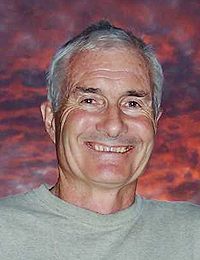In my sophomore year of college, I enrolled in a course that had given generations of students a painless way to satisfy the school's liberal-arts science requirement. It was known as Rocks for Jocks, and the final exam was the easy identification of every rock in a box. If you wanted an A in science, you took geology.
Besides, I liked rocks. I had grown up in the Wood River Valley in a mining family. I had searched for agates out Deer Creek, and had hunted geodes in Hagerman gravels when the mine dumps around Hailey were snow-covered. I collected local ores, with their crystals of pyrite and galena, and from the gravel hills above Sun Valley, I brought home bits of fossils and clear quartz.
But the first day of class, a new professor announced that geology was no longer to be known as Rocks for Jocks. The faculty of Arts and Sciences was determined to bring rigor into the geology program. We were now in a science class, and he was going to teach us science, no matter what had been taught in the past.
The final exam had nothing to do with a box of rocks. It asked for a clear explanation of the chemistry and resulting crystal structures of basaltic minerals under varying conditions of temperature and pressure. I had studied my ass off, and was still grateful for the B-minus I received.
Along the way I had been drilled on high-temperature physics and the dynamics of dissolved gasses, and how aluminosilicate, with its strong chemical bonds, makes plain old rock hang together. I can still tell you about the relationship between plagioclase and orthoclase, information I haven't used in the 40-odd years since I got my B-minus.
Other aspects of the course have become more important over the years. The professor was the paleontologist Steven Jay Gould, who occasionally delighted us with lectures on why Godzilla and King Kong would die of heat stroke before they wrecked a single city, and why Mothra wouldn't be able to fly unless the atmosphere had the density of water. Later, when I read Gould's books, his sentences echoed the clear thinking that had brought the realities of classical physics into his paleontology lectures.
<
In one of those books, Gould went beyond classical physics and applied chaos theory to paleontology, and developed a refinement of evolutionary theory known as punctuated equilibrium. Punctuated equilibrium, put much too simply, suggests that species stabilize for millions of years until something happens and most of them die. Ten million years later, the earth has a whole new zoo.
The agent of change is climate, if climate includes asteroid impacts and super-volcanic eruptions. A new round of evolution is the effect of natural selection operating in a new climate full of empty ecological niches.
Punctuated equilibrium has been accepted by most evolutionary scientists, but if Gould were alive today, he'd be looking for the flaws in his own theory. The scientific method is just a powerful way to process data, he told us. Anyone who makes a religion of science doesn't understand the scientific method. Certainty isn't the point. Asking the right questions is the point.
So in college I learned to believe in a method, rather than in the facts it processed. My geology course made it hard for me to believe anyone's didactic pronouncements, especially when they claimed scientific truth. Skepticism is the proper attitude toward any assertion about climate change, wolves, grazing, dam breachings, oceans dying, the free market or fossil fuel reserves.
Chaos theory tells us that it's impossible to design studies or create computer models that account for all causes and all effects. To bring science into any controversy is to introduce shades of gray where once all was foam-at-the-mouth black and white. When I look at the pseudo-scientific certainty that shows up in Internet discussions of these issues, the phrase "dumb as a box of rocks" comes to mind.
As I write, the week's total of earthquakes under Yellowstone's Norris Geyser Basin exceeds 500. It hasn't been hard for me to recall how much CO2 molten silicates can hold under pressure, and what happens when that pressure is released. That's useful information during a Yellowstone earthquake swarm, not because it can be used to prevent the radical change in climate that a mega-eruption causes, but because it is one more reminder that on this fragile planet, being sure about anything blinds you to the big picture.






































